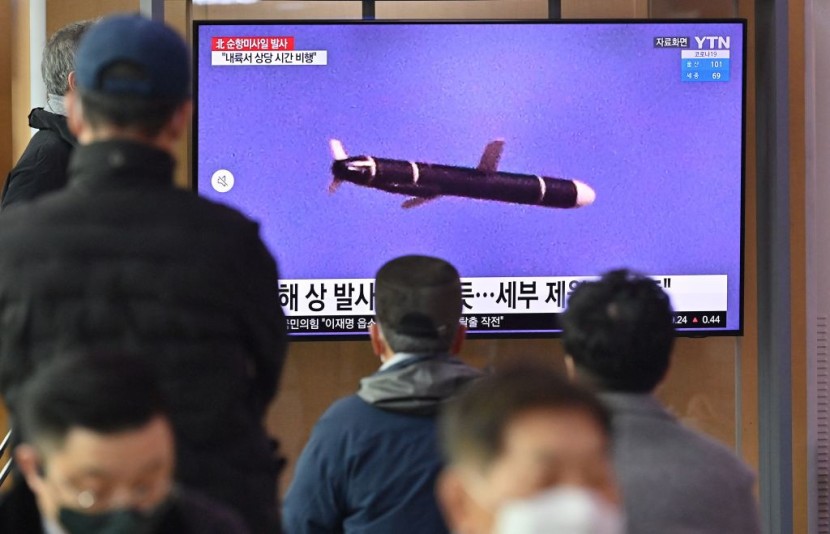
North Korea reportedly fired two cruise missiles on Tuesday, days after its leader Kim Jong Un announced the possible lifting of Pyongyang's self-imposed nuclear weapons moratorium.
The launch was confirmed by the South Korean military, which came followed a series of missile tests of Pyongyang, as per Reuters.
Pyongyang tested "tactical guided missiles," which are short-range ballistic missiles, on January 17, per CNN report. Prior to the launch, the North Korean military claimed that it had successfully conducted test-firing of short-range ballistic missiles launched from a rail car on January 14 and hypersonic missiles tests on January 5 and 11. The missiles fired Tuesday, if confirmed, would be the fifth missiles test this year by the Kim Jong Un leadership.
Tensions have been rising as a result of North Korea's recent missile tests. A US effort for further sanctions was met with a furious response from Pyongyang, increasing the possibility of a return to the 2017 "fire and fury" threats.
North Korea challenges the United States
According to state media KCNA, Pyongyang announced earlier that it intends to upgrade its missile defenses against the United States. It is also considering resuming its moratorium on testing nuclear weapons and long-range missiles.
An official of the KCNA news agency reported that North Korean leader Kim Jong Un met with the powerful commission of the ruling Worker's Party last week to discuss crucial policy issues. The talks included countermeasures over US policy which was described as "hostile."
A few days after North Korea suggested that it may resume its development of nuclear weapons and long-range, sophisticated missiles, a substantial virtual talk between United States President Joe Biden and Japanese Prime Minister Fumio Kishida occurred.
Japan earlier slammed North Korea's recent launching of alleged ballistic missiles as it violates policies of the United Nations Security Council and poses a threat to the region.
After the meeting, Biden and Kishida had established a closer union in pursuing a "free and open" Indo-Pacific to work closely on the issues of China's military aggression in the region and the North Korean nuclear weapons program.
Pyongyang Won't Slow Down On Its Weapons Tests
Some analysts say that Pyongyang could dramatically escalate weapons demonstrations after the Winter Olympics in Beijing set to begin on February 4. China is North Korea's main ally and largest economic partner.
Experts believe the North Korean leadership could employ a big provocation to sway the Biden administration's position, which offered open-ended discussions. However, the US leadership was unwilling to ease sanctions unless Kim demonstrated concrete measures of abandoning his nuclear weapons and missile development.
Last year, Kim revealed that he wanted to obtain high-tech military assets for his country like the hypersonic missiles North Korea has been testing. The other equipment on his wish list includes multi-spy satellites, solid-fueled long-range missiles, multi-warhead missiles, and underwater-launched nuclear missiles.
Hypersonic weapons can fly at speeds higher than Mach 5, five times the speed of sound. Their speed and maneuverability can bring crucial challenges to missile defense systems.
Since 2019, he has significantly increased East Asian country's weapons testing that involves different methods of a missile launching from a train and a submarine, as per the New York Times.
Related Article : North Korea Claims Second Successful Hypersonic Missile Test; Nuclear Modernization Looms
© 2025 HNGN, All rights reserved. Do not reproduce without permission.








